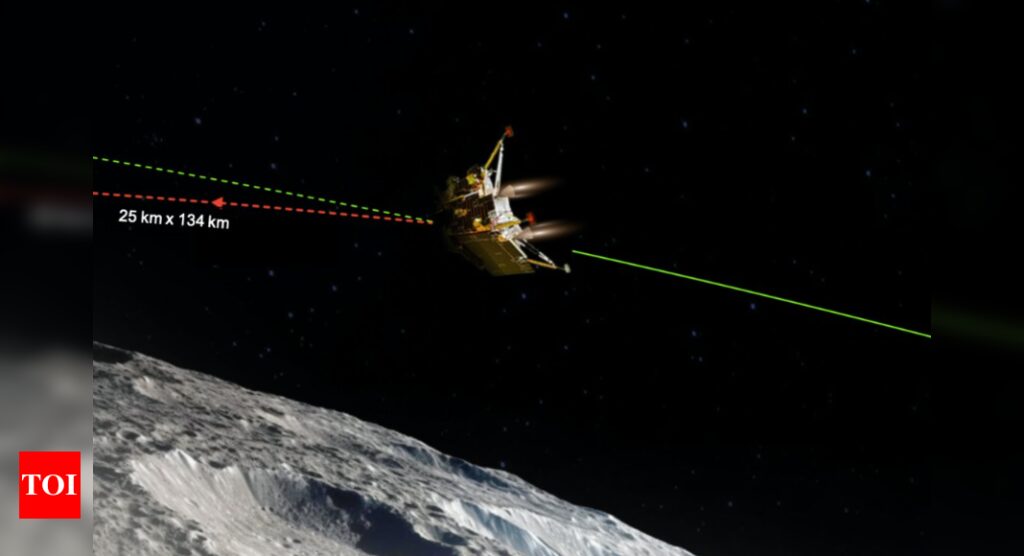[ad_1]
“The second and final deboosting operation has successfully reduced the landing module orbit to 25 km x 134 km. The module would undergo internal checks and await the sun-rise at the designated landing site. Powered descent is expected to commence on August 23 at around 5.45pm,” Isro said.
The lander, which has the rover (Pragyan) in its belly, had performed its first solo operation Friday and entered an orbit of 113km x 157km.
As per the current plan, Isro will attempt soft-landing of Vikram on August 23 and Sunday’s manoeuvre will be critical in reaching the final descent stage.
Chandrayaan-3 Journey So Far
Chandrayaan-3, a follow-up mission to Chandrayaan-2 — which could not soft-land the lander as planned in September 2019 — was conceived within weeks of the Chandrayaan-2 failure.
From there, it took Isro nearly four years to get the spacecraft ready for launch given that the lander had to undergo several changes, including the exclusion of the fifth engine, strengthening of its legs, improvements in the algorithms, additional solar panel area, introduction of new sensors, etc.

03:16
ISRO releases breathtaking visuals of the Moon captured by Chandrayaan-3’s Vikram lander
Launch & Earth-bound Manoeuvres
Finally, on July 14, Chandrayaan-3 was launched and injected into the intended elliptical orbit around Earth and a day after that, Isro completed the first orbit-raising manoeuvre (Earthbound firing-1) putting the spacecraft into an orbit of 41,762km x 173km orbit.
The second Earth-bound manoeuvre was carried out on July 16. This was a minor operation compared to the first manoeuvre and was meant to stabilise the Perigee (closest point to Moon). At the end of that operation, Chandrayaan-3 was in an orbit of 41,603km x 226km.
On July 18, a successful third Earth-bound manoeuvre further increased the Apogee (farthest point from Earth) and put Chandrayaan-3 in an orbit of 51,400km x 228km. Two day later, on July 20, the second-last Earth-bound manoeuvre put the spacecraft in an orbit of 71,351km x 233km.
The Apogee was further increased to breach 1.2-lakh-km on July 25 with a successful final Earth-bound manoeuvre.
TLI & Lunar-bound Manoeuvres
Six days after the last Earth-bound manoeuvre, Isro carried out the trans-lunar injection (TLI) that put the spacecraft on the path to Moon, on August 1. At the end of TLI, Chandrayaan-3’s altitude was nearly 3.6-lakh-km.
And then, on August 5, the space agency performed the Lunar Orbit Insertion (LOI) and put Chandrayaan-3 into an elliptical orbit around Moon. At this juncture, the Perilune (closest point to Moon) was 164km and the Apolune (farthest point from Moon) was 18,074km.
The very next day, Isro completed the second lunar-bound manoeuvre and put the spacecarft into an orbit of 170km x 4,313 km.
On August 9, Isro said: “Chandrayaan-3’s orbit is reduced to 174km x 1437km”, following the third lunar-bound manoeuvre. Five days thereafter, the mission entered the orbit circularisation phase with the fourth lunar-bound manoeuvre on August 14, placing the spacecraft into an orbit of 151 km x 179 km orbit.
Then another manoeuvre set the stage for separation on August 17. Since separation, this (second deboost) is the second manoeuvre performed independently by Vikram.
[ad_2]
Source link










More Stories
We can’t wait to face India in the final: Pat Cummins | Cricket News
Railways plans 3,000 additional trains in next 4-5 years to minimise number of waitlisted tickets | India News
Faridabad: Man dies after ‘falling from hotel room window’ while partying with friends